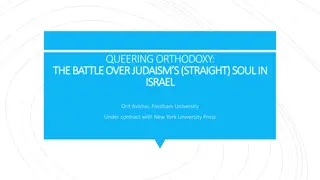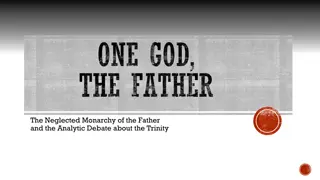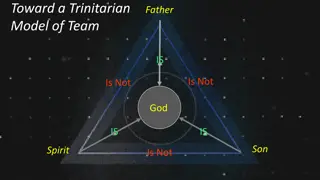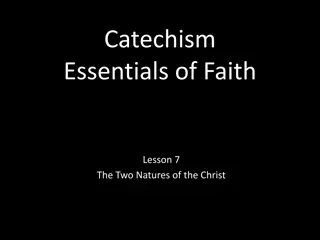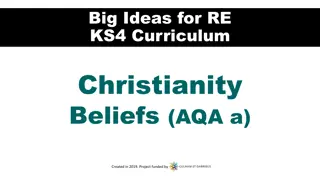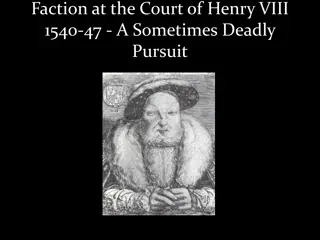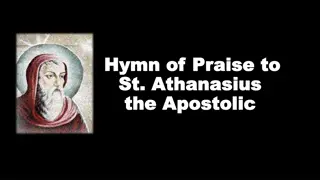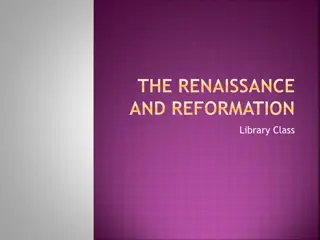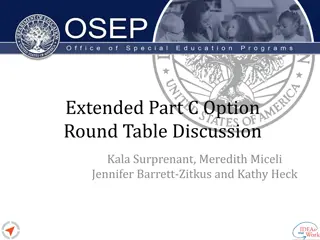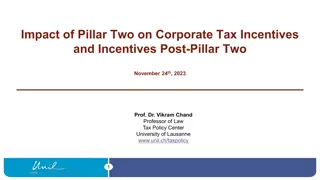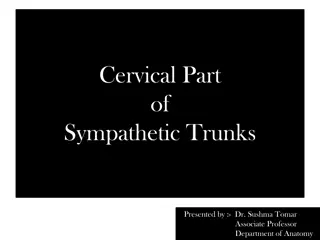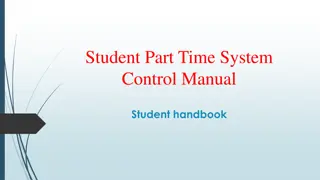Understanding Trinitarian Orthodoxy in "Heresy! Part Two
Exploring the concept of Trinitarian orthodoxy in the context of "Heresy! Part Two" discussing modalism, subordinationism, and the equality of the Persons of the Trinity. The article delves into heresies and orthodox beliefs surrounding the Trinity, providing insights into theological boundaries and historical controversies.
Download Presentation

Please find below an Image/Link to download the presentation.
The content on the website is provided AS IS for your information and personal use only. It may not be sold, licensed, or shared on other websites without obtaining consent from the author. Download presentation by click this link. If you encounter any issues during the download, it is possible that the publisher has removed the file from their server.
E N D
Presentation Transcript
Heresy! Part Two Heresies about the Trinity Cathedral Church of St Peter 23 March 2017
Octavia Spencer After seeing The Shack after enduring, that is, its 132 minutes of blissed-out New Age religiosity I ve become a believer. I believe there is no role Octavia Spencer can t play with convincing feeling and an impeccably straight face. -- Joe Morgenstern, The Wall Street Journal
The Shack I want to use The Shack as a way of starting out with something concrete before we get into the abstract theology. A brief description of the book My own reaction and that of my students A lot of unfair (or unimaginative) criticisms The author at least intends to remain true to Trinitarian orthodoxy.
What is Trinitarian orthodoxy? There is a handy statement of the boundaries of Trinitarian doctrine in the first half of the Quicunque vult (BCP 864- 865). I m going to focus on two phrases: neither confounding the Persons, nor dividing the Substance in this Trinity none is afore, or after other
Neither confounding the Persons, nor dividing the Substance The heresy of confounding the Persons is called modalism or Sabellianism. Modalism is really, really common. Patripassianism is a form (or consequence) of modalism. The heresy of dividing the substance is called tritheism. Popular ideas about the Trinity, in intention orthodox, often tend to be tritheistic in expression.
None is afore, or after other The Persons of the Trinity are in every respect equal. The denial of the equality of the persons is the heresy of subordinationism. Subordinationism concerning the Son: Arianism Subordinationism concerning the Holy Spirit: the Pneumatomachoi In both cases, the heretics could (and did) appeal to Scripture.
Dueling quotations Papa: We are not three gods, and we are not talking about one god with three attitudes, like a man who is a husband, father, and worker. I am one God and I am three persons, and each of the three is fully and entirely the one. Mack noticed the scars in [Papa s] wrists, like those he now assumed Jesus also had on his. Patripassianism or perichoresis?
Arianism Arius of Alexandria (c. 270-336) There was a time when he was not. The Son is a created being. The Son and the Father do not have the same essence (ousia).
What was Arianism all about? One view: It was an intrusion of Greek philosophy into Christian thinking. Arius makes a sharp separation between God and creatures. As part of this, he emphasizes that God is completely beyond our understanding apophatic theology. Another view: Arius was trying to preserve Christianity from making itself culturally irrelevant.
What was Arianism all about? A third view: Arius was defending strict monotheism. Rowan Williams: Those who have insisted that the Arian controversy is essentially about hermeneutics are right. . . . It is not primarily a disagreement about the god of the philosophers versus the God of Abraham, Isaac and Jacob (this is a tension as sharply felt in Catholic as in heterodox writers).
The futility of proof-texting Proverbs 8:22 The Lord created me at the beginning of his work, the first of his acts of old. Psalm 45:7-8 You love righteousness and hate iniquity. Therefore God, your God, has anointed you with the oil of gladness above your fellows. Romans 8:29 For those whom he fore- knew he also predestined to be conformed to the image of his Son, in order that he might be the first-born among many brethren.
Enter Athanasius Athanasius of Alexandria (c. 296-373) Athanasius argued that by going wrong about the person of Christ, Arius also went wrong about the work of Christ. He also argued that Arius made Christian practice incoherent.
Time for a Council Constantine summoned all the bishops of the Church to Nicaea for a council in 325. 250 bishops (of about 1800) attended. In the end, only two bishops sided with Arius. The Council authorized a Creed that would explicitly repudiate the ideas of Arius. But what should it say? Homoiousios or homoousios?
Heresy! Part Two Heresies about the Trinity Cathedral Church of St Peter 23 March 2017


